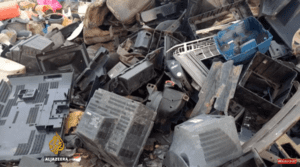 Electronic waste rose to a record 45 million tonnes worldwide in 2016, a United Nations (UN) backed study showed recently.
Electronic waste rose to a record 45 million tonnes worldwide in 2016, a United Nations (UN) backed study showed recently.
A missed opportunity
Talking to Reuters Ruediger Kuehr, head of the U.N. University’s Sustainable Cycles Programme said the low rates of e-waste collection and recycling were a surprise when 67 nations covering two-thirds of the world population had legislation about processing e-waste.What’s more surprising is that people are seemingly unaware of the economic opportunities recycling e-waste presents.
Raw materials in the 2016 scrap were worth an estimated 55 billion euros ($64.61 billion), including metals such as gold, silver, copper, platinum and palladium, according to the report. With that said only 8.9 million tonnes were documented to have been collected and recycled in 2016 with most e-waste ending up as rubbish in landfills even though recycling would make economic sense in most cases. “What is still shocking … is that only 20% is going in the official collection and recycling schemes,” Kuehr told Reuters. –Reuters






